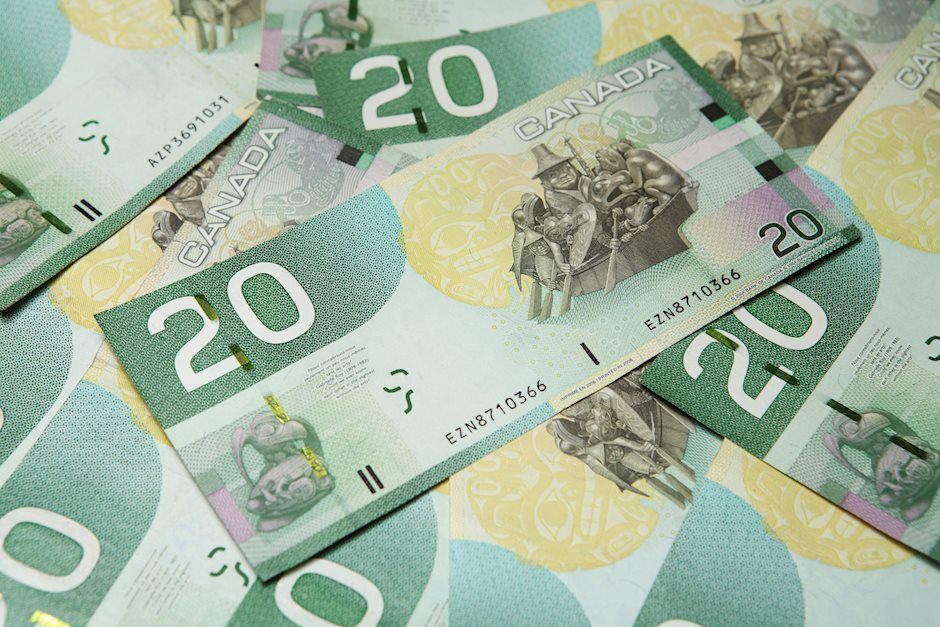USD/CAD slides to fresh weekly low, further below 1.3500 amid an uptick in Oil prices
- USD/CAD attracts sellers for the second straight day, though the downside seems limited.
- Oil prices rise amid Middle East tensions and underpin the Loonie, weighing on the major.
- Reduced bets for a 50 bps Fed rate cut in November lend support to the USD and the pair.

The USD/CAD pair extends the previous day's retracement slide from the 1.3535-1.3540 region, or a one-week high and remains under some selling pressure for the second straight day on Wednesday. The downfall drags spot prices to the 1.3475 area during the Asian session and is sponsored by a modest uptick in Crude Oil prices.
Fears of a full-out war in the Middle East escalated after Iran fired ballistic missiles at Israel on Tuesday in retaliation to the latter's campaign against its Hezbollah allies in Lebanon. Meanwhile, Israeli Prime Minister Benjamin Netanyahu promised that Iran would pay for its missile attack. An Israeli attack on Iran's oil facilities could disrupt oil supply from the key producing region and act as a tailwind for the black liquid, which underpins the commodity-linked Loonie and exerts downward pressure on the USD/CAD pair.
The US Dollar (USD), on the other hand, continues to draw support from diminishing odds for a more aggressive policy easing by the Federal Reserve (Fed) and Tuesday's US macro data, indicating a resilient labor market. The Fed Chair Jerome Powell said on Monday that he sees two more 25 bps rate cuts this year as a baseline if the economy performs as expected. Adding to this, the Job Openings and Labor Turnover Survey (JOLTS) showed that the number of job openings unexpectedly increased in August and stood at 8.04 million.
This, in turn, assists the USD to preserve its strong recovery gains registered over the past two days and might hold back traders from placing aggressive bearish bets around the USD/CAD pair. Apart from this, expectations for a bigger interest rate cut by the Bank of Canada (BoC) should cap gains for the Canadian Dollar (CAD) and contribute to limiting losses for the currency pair. This makes it prudent to wait for strong follow-through selling before confirming that the recent bounce from a multi-month low has run out of steam.
Investors now look forward to the release of the US ADP report on private-sector employment, which, along with geopolitical developments, will drive the USD demand. Apart from this, Oil price dynamics might provide some impetus to the USD/CAD pair and allow traders to grab short-term opportunities. The focus, however, will remain glued to the closely-watched US monthly employment details, popularly known as the Nonfarm Payrolls (NFP) report on Friday.
Canadian Dollar FAQs
The key factors driving the Canadian Dollar (CAD) are the level of interest rates set by the Bank of Canada (BoC), the price of Oil, Canada’s largest export, the health of its economy, inflation and the Trade Balance, which is the difference between the value of Canada’s exports versus its imports. Other factors include market sentiment – whether investors are taking on more risky assets (risk-on) or seeking safe-havens (risk-off) – with risk-on being CAD-positive. As its largest trading partner, the health of the US economy is also a key factor influencing the Canadian Dollar.
The Bank of Canada (BoC) has a significant influence on the Canadian Dollar by setting the level of interest rates that banks can lend to one another. This influences the level of interest rates for everyone. The main goal of the BoC is to maintain inflation at 1-3% by adjusting interest rates up or down. Relatively higher interest rates tend to be positive for the CAD. The Bank of Canada can also use quantitative easing and tightening to influence credit conditions, with the former CAD-negative and the latter CAD-positive.
The price of Oil is a key factor impacting the value of the Canadian Dollar. Petroleum is Canada’s biggest export, so Oil price tends to have an immediate impact on the CAD value. Generally, if Oil price rises CAD also goes up, as aggregate demand for the currency increases. The opposite is the case if the price of Oil falls. Higher Oil prices also tend to result in a greater likelihood of a positive Trade Balance, which is also supportive of the CAD.
While inflation had always traditionally been thought of as a negative factor for a currency since it lowers the value of money, the opposite has actually been the case in modern times with the relaxation of cross-border capital controls. Higher inflation tends to lead central banks to put up interest rates which attracts more capital inflows from global investors seeking a lucrative place to keep their money. This increases demand for the local currency, which in Canada’s case is the Canadian Dollar.
Macroeconomic data releases gauge the health of the economy and can have an impact on the Canadian Dollar. Indicators such as GDP, Manufacturing and Services PMIs, employment, and consumer sentiment surveys can all influence the direction of the CAD. A strong economy is good for the Canadian Dollar. Not only does it attract more foreign investment but it may encourage the Bank of Canada to put up interest rates, leading to a stronger currency. If economic data is weak, however, the CAD is likely to fall.
Author

Haresh Menghani
FXStreet
Haresh Menghani is a detail-oriented professional with 10+ years of extensive experience in analysing the global financial markets.

















